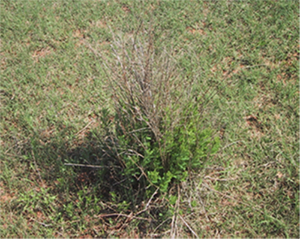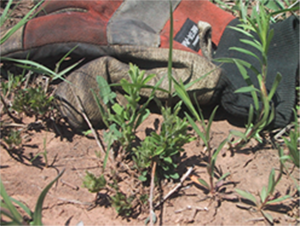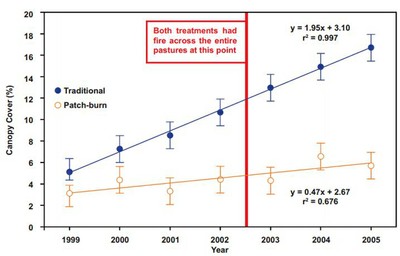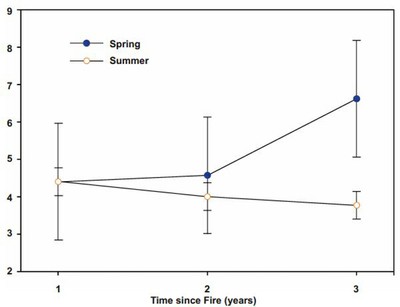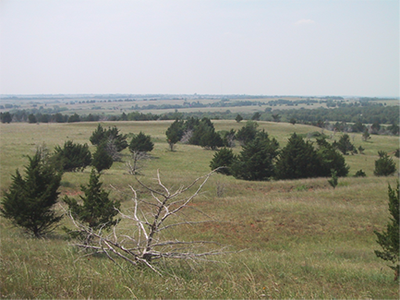Invasive Plants
Invasive plants can either be native or exotic and are defined by their ability to rapidly increase in vegetative cover, the rate and extent of land area they occupy, and their ability to disrupt an existing ecosystem. While most plant species stay within a set area and have herbivores or other limitations to their expansion, invasive plants tend to be highly competitive and exhibit traits which deter herbivory, insects, or disease. By displacing native plants, these invasive plants often become the dominant plant species in sensitive areas, thus altering the ecosystem and the organisms that utilize it.
Sericea lespedeza (Lespedeza cuneata) is an invasive herbaceous plant species that impacts many parts of the southern Great Plains. Sericea is native to East Asia and was introduced into the US in 1896 as a forage plant. It is also planted for erosion control, land reclamation, and hay across the eastern US. Germination occurs in spring and it flowers between August and October. However, the aggressive growth of the plant and prolific seed production allows it to quickly escape cultivation and invade adjacent native prairie. The coarse, persistent stems deter grazing of young tender shoots the following season, thus allowing the plant to grow and reproduce if control measures are not taken. Herbicide applications can effectively control existing plants of sericea lespedeza, but these herbicides are expensive and detrimental to the native trees and forbs which are important wildlife and livestock forage.
Patch burning allows livestock to graze sericea, keeping it short and palatable. Patch burning has also been shown to decrease the rate of invasion by four times the invasion rate of traditional management (Figure 14). In addition, summer fires within the patch burning treatment appear to decrease the sericea lespedeza cover even more than the spring patch- burns (Figure 15).
Eastern red cedar is an example of a woody plant species that is invading the grasslands, shrublands and forests of the Great Plains. This evergreen is a native, non-sprouting, tree that was historically confined to river bottoms and draws where fire could not reach it. But since the start of European settlement and fire suppression, this tree began to invade numerous habitats across the Great Plains. Patch burning has been found to be an effective management practice for controlling eastern red cedar. It allows areas to be burned that have had no history of fire, along with permitting greater accumulations of fine fuels for future prescribed fires. These larger fine fuel loads also allow for better control of larger trees, which are more difficult to control with fire under traditional grazing and fire systems.
Caption: The sericea lespedeza plant on the left is has not been utilized and the old stems deter grazing, which is characteristic of traditional grazing practices. The sericea lespedeza plant on the right has been burned and heavily grazed with patch burning. Patch burning allows livestock to graze sericea, keeping it short and palatable. Photos D. Chad Cummings.
Figure 14. Annual invasion of sericea lespedeza within patch burning and traditional grazing management practices. Patch burning suppresses the sericea lespedeza invasion while the traditional grazing management allows the invasion to occur at roughly a 2% increase in cover per year, four times that which is seen in the patch burn treatment. (from Cummings et al. 2007).
Figure 15. Effect of season of burn (spring v. summer) with patch burning on sericea lespedeza cover. Summer burning appears to decrease the cover of sericea lespedeza over time. (From Cummings 2007.)
Caption: Eastern red cedar encroaching into tallgrass prairie in Oklahoma. Under continuous heavy stocking, eastern red cedar is capable of rapid invasion from seeds if prescribed fire is absent from the land. With patch burning, fine fuel for prescribed fires is built up over time. This allows adequate fuel for intense fires, which is necessary to kill the taller trees. Photo D.Chad Cummings.

